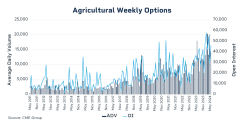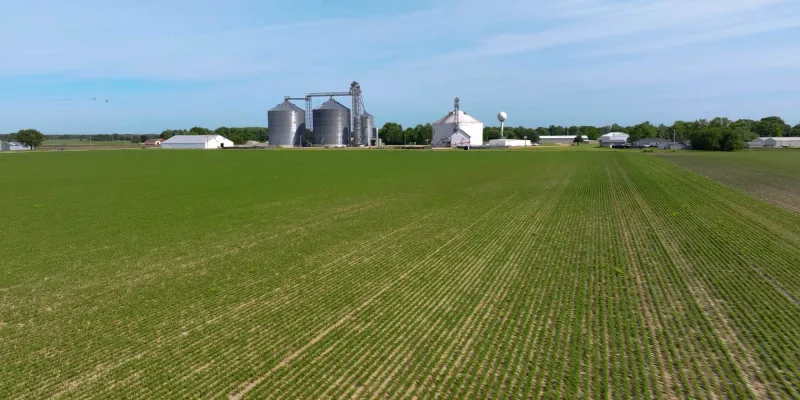Matt Bennett, for CME Group
At a Glance:
- As high input costs persist, 2024 could be another challenging year for corn belt farmers, making risk management critical to profitability
- Grain options provide a price range for crops, and lock in a worst-case scenario, helping ease the burden of unpredictable weather, trade and other concerns
2021 and 2022 were excellent profit margin years on our farm, as they were for many farms in the United States. With average cash price for corn at $6 and $6.54 respectively, many U.S. producers healed up from a few years of lackluster prices.
In 2023, things turned in a big way. With massive increases in input costs, it made profitability hard to come by for most producers, my operation included. With a crop going in the ground for $1,000+ per acre, the insurance price of $5.91 was one of the only things that kept my peace of mind. While many growers struggled with profit margins, we were fortunate to have hedged a fair amount of our 2023 production when we bought our pricey fertilizer – a habit I stick to every growing season. This allowed us to have a profitable 2023, but 2024 has been even more challenging.
Locking in a Worst Case Scenario
We were fortunate once again to use options strategies to protect us from price deterioration as we were booking fertilizer. I generally book mine in August as many producers do, and with December 2024 corn trading over $5 at the time, we were able to employ a $5/4 bear put spread and sell a $6 call for around 15 cents.This provided a price range for our crop, and locked in a worst-case scenario of $4.85, which worked well with what we were paying for fertilizer. Since fertilizer costs our operation over $400/acre, with corn at $5, we wanted to protect around 80 bushels/acre or 40% of our crop.
Another strategy we employed in that same timeframe was to buy a March short-dated $5 put and sell a March short-dated $5.50 call on 50% of my average production history. This costs just a nickel to put on, and covers 90% of our crop while providing a floor for any losses. This is an aggressive strategy, but allows me to have a crop insurance price of no lower than $4.95.
Using these strategies put me in good shape to hold things together in 2024. Given the spring crop insurance price set in February ended up being $4.66, a 27% drop from 2023, these strategies paid big dividends.
Producers are increasingly using options as a tool to manage the increasing risks we experience around input costs, weather, geopolitical conflict or trade. At CME Group, weekly options in the ag complex have seen a big jump in trading, with a record of more than 20,000 traded daily in March, just ahead of planting. One of the key benefits is the ability to precisely hedge around a specific event with weekly expirations.

On the agronomic side, we generally have our nitrogen split-applied to spread out our risk. At least half of our nitrogen is put on in the fall with the rest side-dressed after the crop comes up. Spring 2024 was a bit of a challenge due to wet weather conditions.
We were quite fortunate in our neighborhood in central Illinois, though. We were able to plant our tiled ground which happens to be some of our better ground in April, while planting our lighter ground in mid-May. We didn’t get any heavy rains, which was a blessing. Our stands are excellent so far with moisture levels in good shape as we entered the summer months.
Thinking About Rates and Inflation
Many producers are optimistic heading into the later summer months. The late spring saw good corn and soybean planting progress, according to the USDA, and the Ag Economy Barometer showed an increase in future expectations among producers as prices rose into June. Still, farmers everywhere are watching interest rates, inflation and an election cycle that could throw some wildcards in place.There is only so much that a producer can control. The most important thing is to have a good handle on those things we can control, like managing our risk by protecting profit margins when they are present. Given wild swings in profitability the last four years, risk management has become one of a grain producer’s most critical tools.






